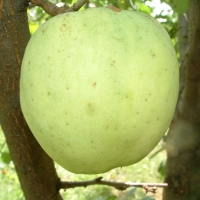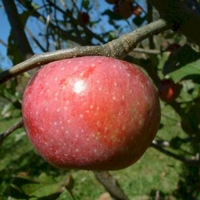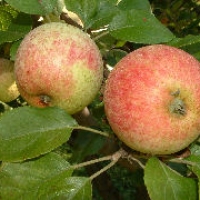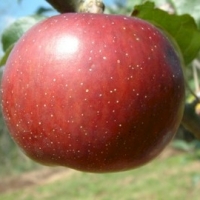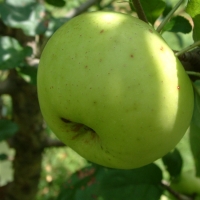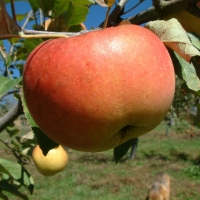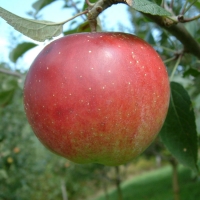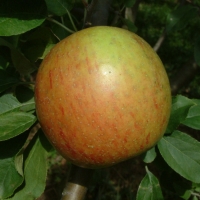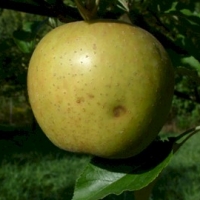Yellow Bellflower
Also known as: Fall Bellflower, Lady Washington, Yellow Sheepnose, Belle Fleur, Bellflower, Warren Pippin, Sheepnose, Lincoln Pippin, Mrs. Barron, Bishop Pippin Yellow Bellflower originated in the early 1800’s in Burlington, New Jersey. Medium size fruit is conical, often ribbed, with distinctive knobs at the calyx …
Read MoreYates
Also known as: Yates Winter, Red Warrior, Jates, Ferguson Late Yates originated with Matthew Yates of Fayette County, Georgia, around 1844. Long a popular Southern favorite prized for its fine flavor and long keeping qualities. Excellent cider apple. Grows well in all regions from the …
Read MoreWinter Jon
Also known as: Winter John, Sour Jon A fine old mountain apple of unknown origin grown in the Southern Appalachians for generations. Long noted as an excellent cooking variety, Winter Jon is also superb for cider making. Its rather tart flavor blends well with sweeter cider varieties. Fruit …
Read MoreWinesap
Also known as: Holland’s Red Winter, Blacktwig, Winter Winesap, Royal Red, Texan Red, Old Fashion Winesap, Potpie, Refugee, Wine Sop, Banana, Dukes Winesap(?) Probably the most popular apple in the South but is of northern heritage. Originated in New Jersey around 1800 and has given …
Read MoreWine
Also known as: Hay’s Winter, Winter Wine, Large Winter Red, Winter Haze, English Redstreak, Pennsylvania Red Streak, Wine Apple, Hollow Crown Pearmain, Redstreak, Winter Red, Fine Winter, Hay’s Wine, Wine of Pennsylvania This apple came from Delaware in the mid-1800’s and is quite well adapted …
Read MoreWillow Twig
Also known as: Willow, James River, Red Willow Twig, Willow Leaf(?), Maryland Red Streak(?), Missing Link(?) The origin of this apple is rather obscure, but generally believed to have arisen in Virginia in the mid-1800’s. The tree is very attractive, with a drooping appearance similar …
Read MoreWhite Winter Pearmain
Also known as: White Pearmain, Cambellite, Griffin’s Pearmain (in Texas) A very fine apple first described in 1867. Widely sold throughout the South and prized for its fresh eating qualities. A North Carolina nursery catalog in 1870 stated: “Regarded by leading pomologists as the highest …
Read More



